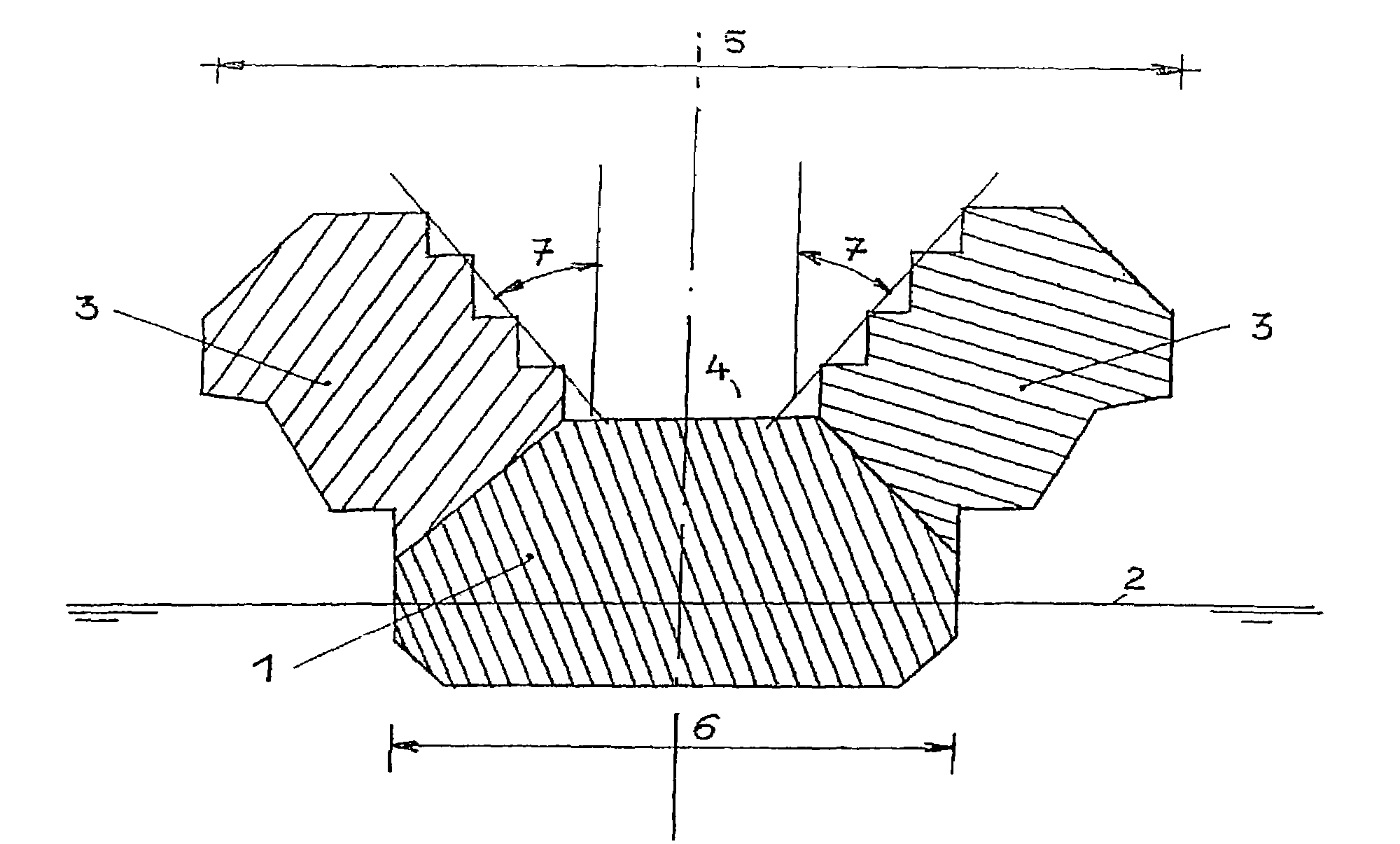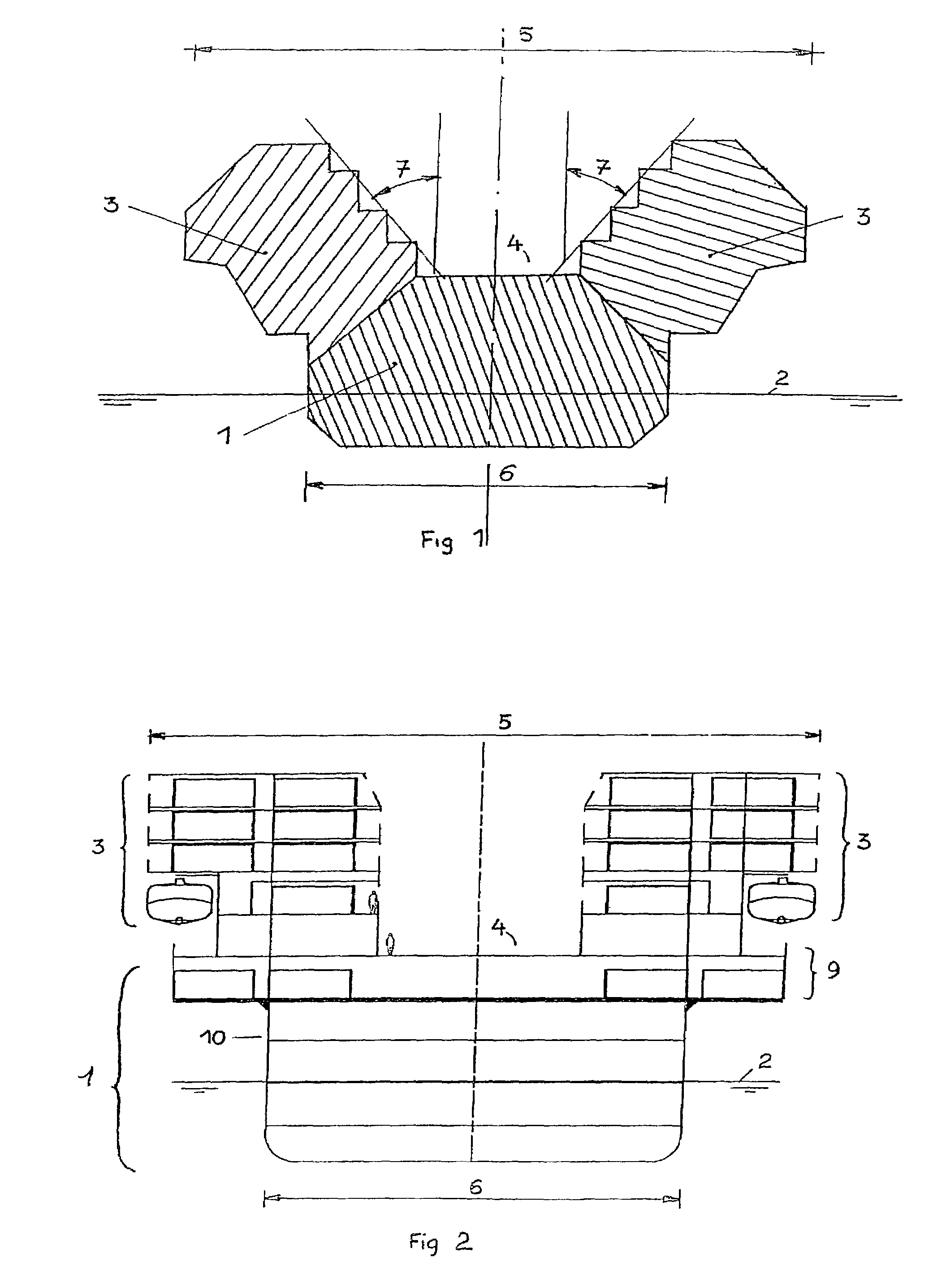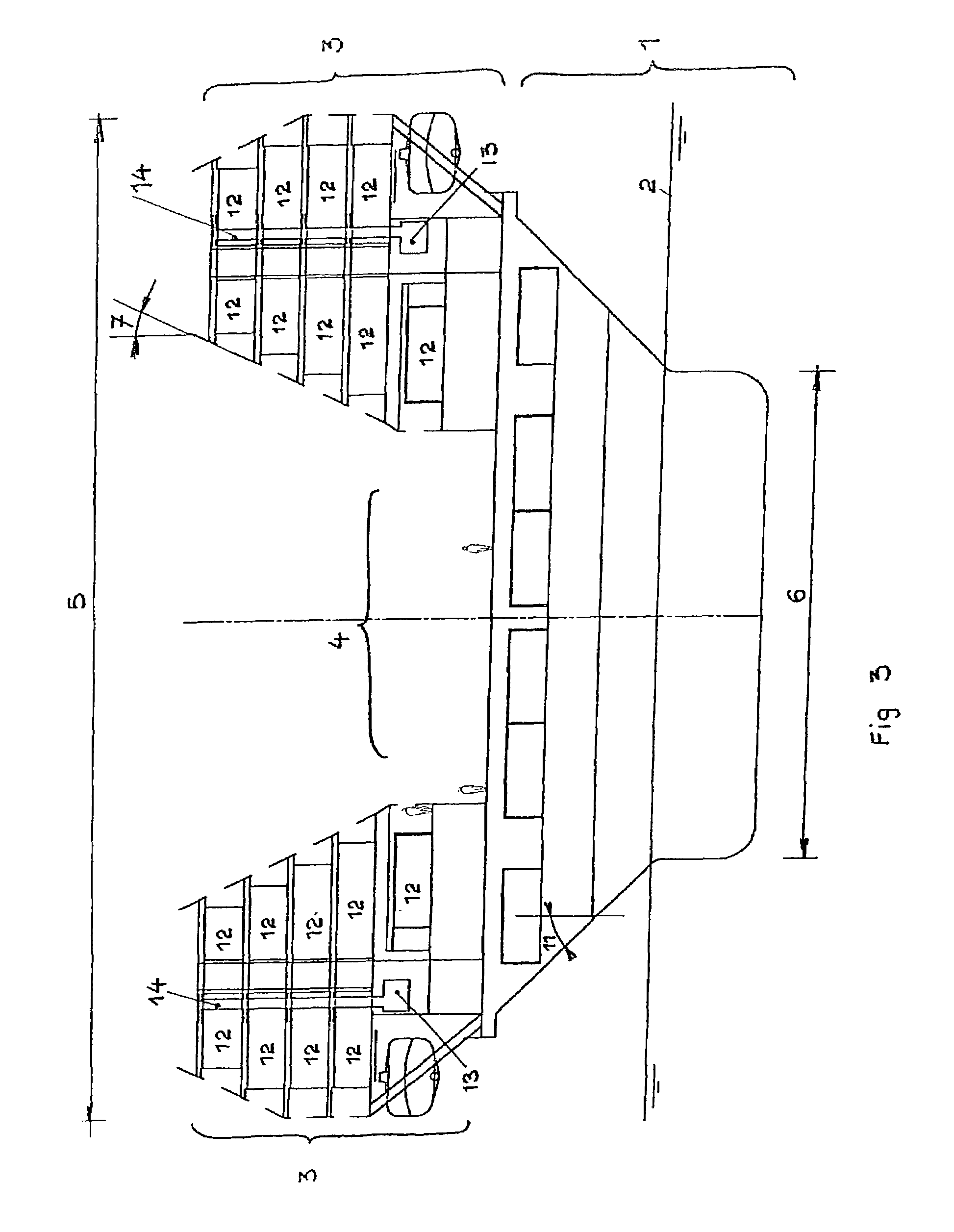[0014]In a ship according to the present invention, of the kind having an open or semi-open main public space situated around the axial
longitudinal plane of the ship and at the base of port and starboard longitudinal superstructures, the port and starboard longitudinal superstructures that border the public space are inclined away from the axial longitudinal plane of the ship so that the width of the combination comprising the longitudinal superstructures and the public space is significantly greater than the width of the ship at the
waterline, the ratio of the width of the combination comprising the longitudinal superstructures and the public space to the width of the ship at the
waterline being from 1.3 to 3, and preferably from 1.6 to 2.5. This increases the transverse
inertia of the ship, which makes it roll more slowly and makes its rolling characteristics less sensitive to short-period swell. Moreover, the volume above the public space is made larger, the public space becomes more user-friendly and functional, and the areas situated in the longitudinal superstructures and giving onto the public space become more pleasant. Moving the two superstructures farther apart reduces the risk of a fire propagating from one
superstructure to the other. The ship is advantageously of the single-
hull type. The quickwork of the ship is classically proportioned, meeting comfort, stability and drag requirements. The dimensions and
mass of the longitudinal superstructures are similar to facilitate transverse balancing of the ship, but the longitudinal superstructures need not be exactly symmetrical. The expression “widened
assembly” refers to the
assembly comprising the public space and the port and starboard longitudinal superstructures that border it. The ship can have one or more widened assemblies.
[0016]It is advantageous to dedicate the port and starboard structures that border the public space primarily to passenger cabins, so that all cabins give onto the outside, some cabins having the benefit of a sea view and others having the benefit of a view onto the public space. Passenger cabins are also arranged along the inclined inboard facade of the port and starboard superstructures such that a distance between the axial longitudinal plane of the ship and the inboard walls of the cabins is greater at the top of the
superstructure than at the base of the
superstructure. The horizontal circulation of the
air conditioning trunking can be grouped together at a
single level, the cabins situated in these superstructures on a different
deck being fed with conditioned air from this level by vertical
trunking in groups of two to four. This simplifies the design, construction and erection of these areas. In particular, it is practical to fabricate prefabricated cabin elements into which vertical
air conditioning trunking is integrated (and even water pipes, electrical cables, etc.).
[0018]In a first embodiment, the
hull of the ship according to the invention flares rapidly above the waterline, with a mean angle to the vertical of at least 25°, the longitudinal superstructures that border the main public space being situated close to each side of the flared hull. In the event of invasion by water, the overall shape of the ship increases the width at the waterline as the ship settles, and thus significantly improves the stability of the ship, which depends directly on the transverse
inertia at the waterline.
[0019]In a second embodiment, the width of the hull of the ship according to the invention does not increase much or at all above the flotation line, the mean angle between the edge of the hull and the vertical being less than 25°, the longitudinal superstructures that border the public space being situated close to the side on a superstructure situated on the hull, at least 2.5 meters high and significantly wider than the ship at the flotation line. This configuration enables the ship to be designed with a relatively simple longitudinal structure.
[0020]In the ship according to the invention, at least the aft two thirds of all of the superstructures consist of one or more public spaces bordered by longitudinal superstructures, the forward part consisting of an enclosed area extending over the whole of the width. This area can be dedicated primarily to public spaces,
cruise spaces and the wheelhouse. The center of gravity of the ship is thus positioned significantly further forward than in a conventional cruise ship or pleasure boat. Making the quickwork more bulky in the forward third, but not wider, balances the trim of the ship, without moving forward the center of
inertia at the waterline. The longitudinal offsetting of the center of gravity relative to the center of inertia at the waterline is a factor improving the pitching behavior of the ship with some kinds of swell.
 Login to View More
Login to View More  Login to View More
Login to View More 


